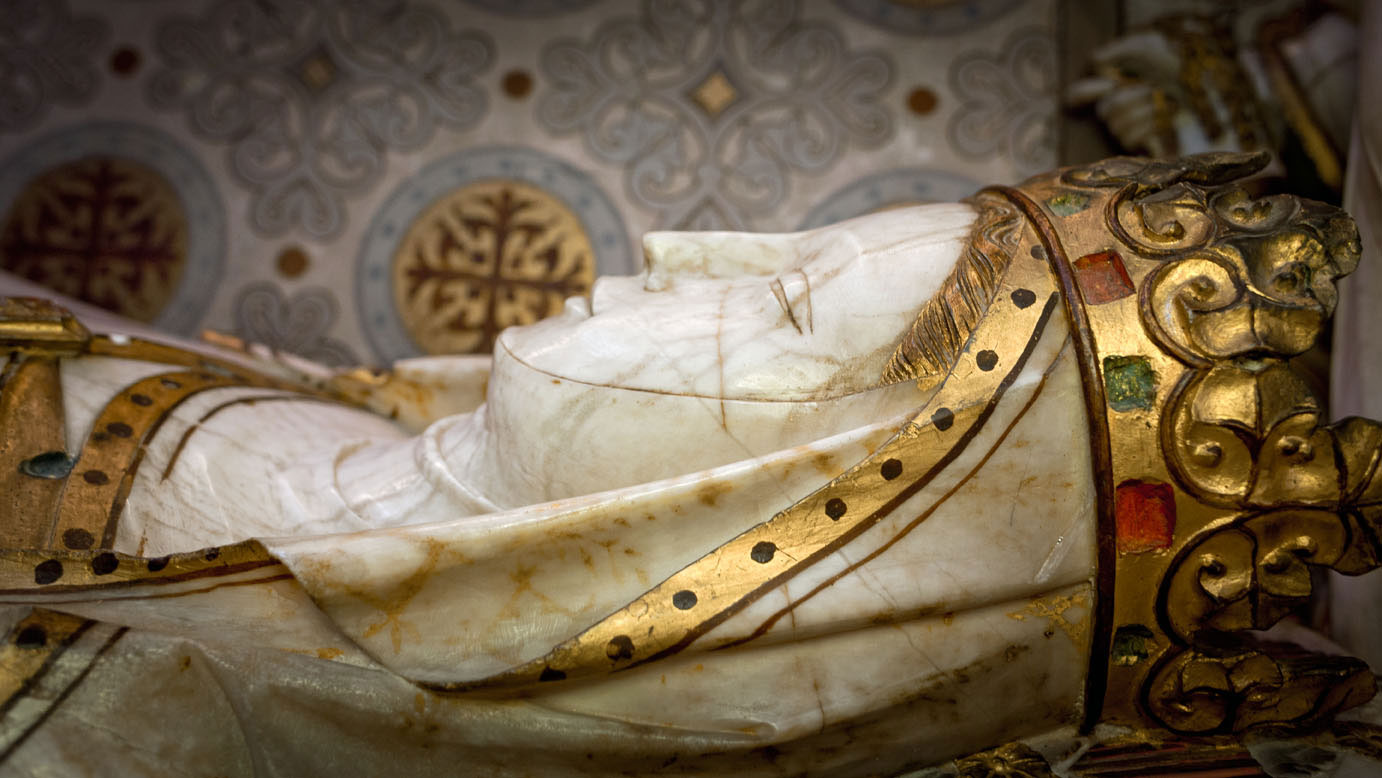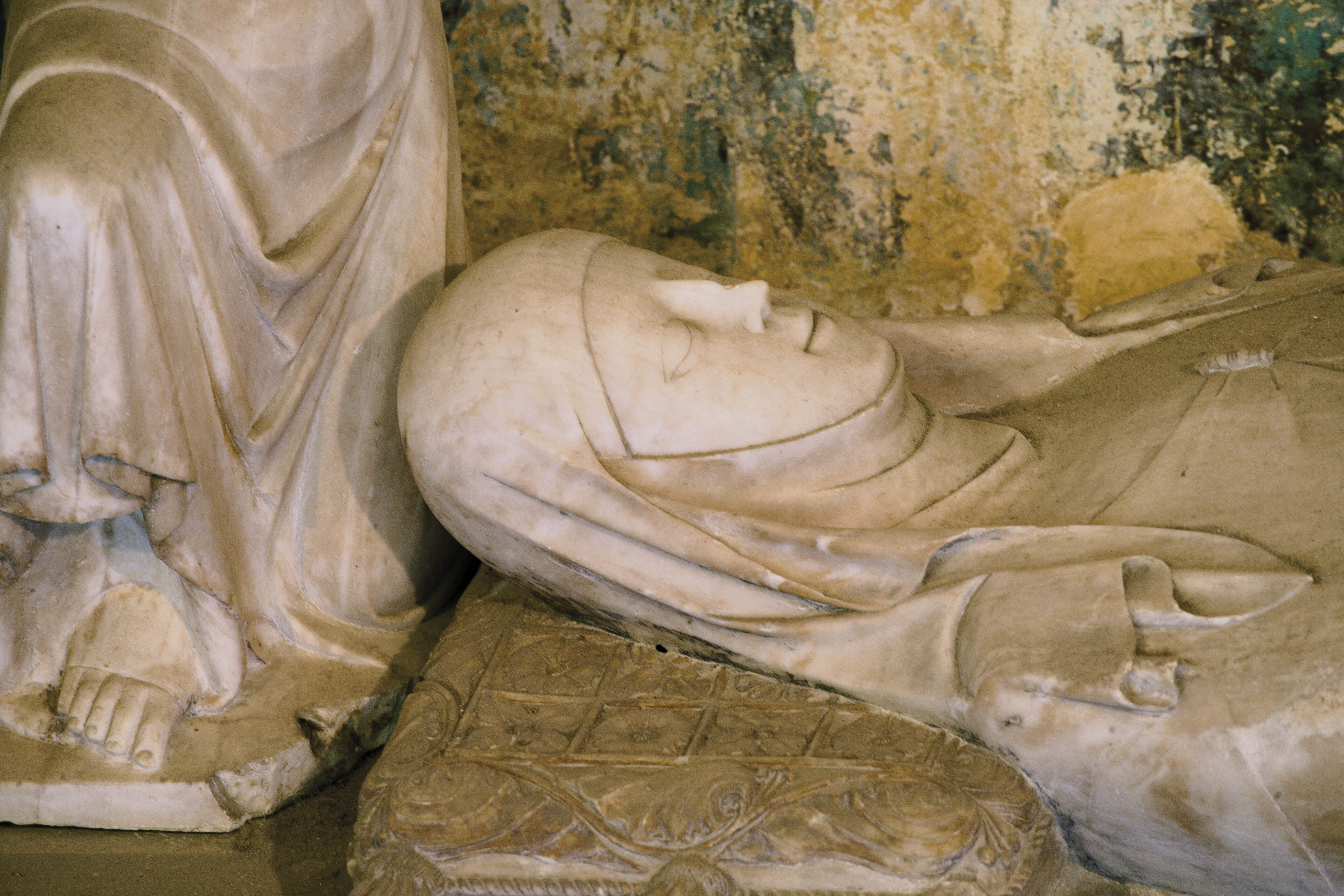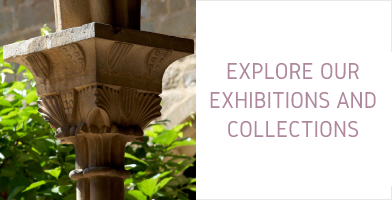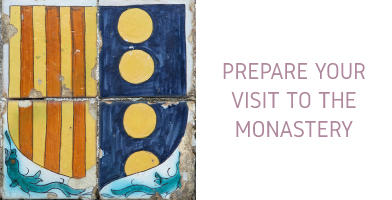The sepulchre of Queen
Elisenda de Montcada (c. 1292-1364), daughter of the Lord Steward, Peter II of Montcada, and Elisenda de Pinós, was a member of one of the most powerful and influential medieval Catalan families in the kingdom. Following her marriage to James II the Just (1267-1327) she became Queen of the Catalan-Aragonese Crown. Elisenda and James founded the Monastery of Pedralbes for the salvation of their souls. When the king died, Elisenda moved to the palace situated next to the monastery, a worthy place for the retirement of a childless, widowed queen. From there she was able to continue exercising power and influence. She spent the last 37 years of her life in Pedralbes. Although she never became a nun, she took an active part in the life of the community.
Her sepulchre, which was sculpted during her lifetime, consists of a marble, two-sided tomb occupying two storeys of the cloister within an arcosolium. The side facing the cloister presents Elisenda as a penitent widow, while the side giving on to the inside of the church shows her as the queen, wearing royal garments and a crown. The sepulchre is supported by three golden lions and there are several carved figures on the front, which are not original. By the queen’s feet and head there are two kneeling thurifer angels, burning incense, while two other angels present the queen’s soul to the Heavenly Father. On the pinnacles decorating the arcosolium, there are images of St Francis and St Clare, founders of the Franciscan orders, and St James and St Elizabeth, the patron saints of the king and queen. The sepulchre is representative of the whole complex of the church and the monastery and reveals the queen’s desire to express all her ideals of life and Franciscan devotion there.

Built by unknown hands, the tomb has stylistic features reminiscent of the workshops employed by the Catalan Crown at that time. Pere de Guines and Aloi de Montbrai have been proposed as possible builders of the piece, which has been dated to around 1343.
Also in the cloister, next to the sepulchre of Queen Elisenda, there are three sepulchres of three Catalan noblewomen. The first belongs to Beatriu de Fenollet and displays the remains of painted murals depicting the ascension of her soul to the side of the Heavenly Father. This is followed by the sepulchres of Constança de Cardona and Elionor de Pinós, which, like the queen’s sepulchre, are two-sided, with a public part facing into the church. Beside the arcosolium and within the same precinct, which is closed off by railings, there is another sepulchre, also in marble, the burial place of Francesca ça Portella, second abbess of the monastery and Elisenda’s niece.
- Presentation 1
-
History
2
-
The Space
3











